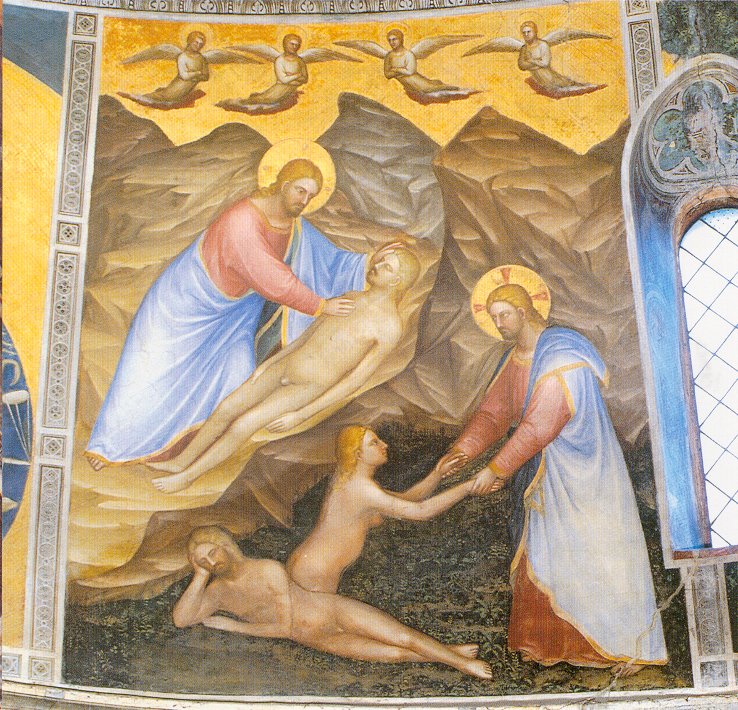
The story of the fiery destruction of Sodom and Gomorrah in Genesis 19:1-28 is often cited as proof of God’s anger against homosexuals. This interpretation may seem obvious: after all, the men of the city crowd around Lot’s house, demanding the men who are his guests (actually angels): “Where are the men who arrived tonight? Bring them out to us so that we may have sex with them” (Gen 19:5). Certainly this story came to be understood as God’s condemnation of certain sexual acts: after all, this is where the word “sodomy” comes from.
In the Bible, however, Sodom does not appear to be understood in this way. “Sodom” is mentioned in the Bible, Old and New Testaments combined, in 47 verses (see the Afterword below for a complete list). Most commonly (in 21 verses) it is used metaphorically, as an example of total destruction brought by divine wrath (for example, Deut 29:23; Matt 11:24//Lk 10:12), with nothing specifically said about the reason for Sodom’s destruction. Only one fairly obscure New Testament text explicitly relates Sodom’s destruction to sexual sin:
I remind you too of the angels who didn’t keep their position of authority but deserted their own home. The Lord has kept them in eternal chains in the underworld until the judgment of the great day. In the same way, Sodom and Gomorrah and neighboring towns practiced immoral sexual relations and pursued other sexual urges. By undergoing the punishment of eternal fire, they serve as a warning
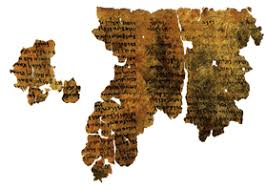
Chances are you are unfamiliar with a story about rebellious angels kept “in chains in the underworld” (the NRSV renders the Greek more literally, as “eternal chains in deepest darkness”). That is because (unless you are Ethiopian or Eritrean Orthodox), this story is not in your Bible. It comes from the Book of the Watchers, a third-century B.C. Jewish apocalypse contained in a collection of works associated with the primordial patriarch Enoch (see Gen 5:18-24), commonly called 1 Enoch (note that Jude 14-15 quotes from 1 Enoch 1:9). Genesis 5:23 says, “Enoch walked with God; then he was no more, because God took him”–presumably into heaven. The various works collected in 1 Enoch claim to describe what Enoch saw when he was taken up by God.

The Watchers were angels, charged with caring for humanity, who instead gave humans forbidden knowledge, and had sex with human women. Out of these unions the Nephilim (Hebrew for “fallen ones”) were born: giants, monsters, and heroes of ancient times (see Gen 6:1-4). For their crimes, the Watchers were imprisoned until the final judgment (1 Enoch 10:4-14).
It is important for us to know this story, because Jude tells us that Sodom and Gomorrah were destroyed for acting “in the same way”–that is, for doing what the Watchers did. The CEB translates the Greek opiso sarkos heteras as “other sexual urges” (the NIV has “perversion”), but a more literal rendering would be “going after other [or “strange”] flesh” (see the KJV). The explicit comparison with the story of the Watchers makes plain what is meant by this odd expression. The men of Sodom lusted after angels, just as the angelic Watchers lusted after human women. So the passage in Jude doesn’t condemn the men of Sodom for same-sex relations, but for desiring sexual relations with angels (for Jude’s concern about showing angelic beings proper respect, see Jude 8-10).
Apart from Jude, the destruction of Sodom is broadly understood as a penalty for wickedness. Ezekiel 16:49-50, however, is more specific:
This is the sin of your sister Sodom: She and her daughters were proud, had plenty to eat, and enjoyed peace and prosperity; but she didn’t help the poor and the needy. They became haughty and did detestable things in front of me, and I turned away from them as soon as I saw it.
Since the word rendered “detestable thing” here (Hebrew
to’ebah) in used in
Leviticus 18:22 and
20:13 for male homosexuality, some have proposed that that is the meaning in Ezek 16:50 as well. However,
to’ebah, which refers broadly to something disgusting, is used differently in different contexts (we will discuss this in more depth when we turn to the Leviticus passages). In Ezekiel, where the term appears 43 times, it refers fairly consistently to idolatry (for example,
Ezek 6:9; for the concern for idolatry in Ezek 16, see
16:16-21). Throughout the prophets, right living and right worship are treated as inseparable. So too for Ezekiel, injustice to the poor and false worship together led to Sodom’s destruction.

Ezekiel’s charge is implied in the LORD’s word to Abraham concerning Sodom:
Then the Lord said, “The cries of injustice from Sodom and Gomorrah are countless, and their sin is very serious! I will go down now to examine the cries of injustice that have reached me. Have they really done all this? If not, I want to know.”(Gen 18:20-21).
The Hebrew word rendered “cries of injustice” is za’aqah (sometimes spelled tsa’aqah), typically used for the cry of the oppressed for help. For example, Exod 22:21-24 says,
Don’t mistreat or oppress an immigrant, because you were once immigrants in the land of Egypt. Don’t treat any widow or orphan badly. If you do treat them badly and they cry out to me, you can be sure that I’ll hear their cry. I’ll be furious, and I’ll kill you with the sword. Then your wives will be widows, and your children will be orphans.
The widow and the orphan of course we recognize: we can understand how they could fall through the cracks of the clan-based economy of ancient Israel, requiring a special command to ensure their just treatment. However, we are probably less familiar with the term ger (translated “immigrant” in the CEB, but commonly rendered “sojourner”).
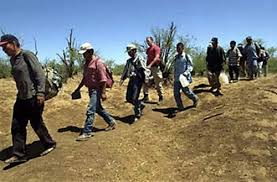
As the CEB recognizes, the Hebrew word ger is generally used in the Old Testament for what we today might call refugees, or perhaps immigrants: people of foreign birth, living within the borders of Israel but without land or legal status. Generosity to the ger is a consistent biblical principle (for example, Lev 19:33-34; Deut 10:18-19)–likely because, like the widows and the orphans, the gerim have no one to look out for their rights.

In Genesis 19, the messengers from God come to Sodom as outsiders, strangers–as gerim. Sodom, however, is not kind to strangers. When the messengers tell Lot that they intend to sleep in the town square, he is horrified–he begs them not to do so, but to come into his house, and under his protection, instead (Gen 19:2-3). Lot knows too well what happens to strangers found in Sodom after dark.

Of course, the strangers are discovered anyway, and a mob assembles outside of Lot’s home, demanding that they come out. What the mob wants to do to the strangers has nothing to do with anyone’s idea of consensual, sexual intimacy. This is about violence: rape and humiliation. That homosexuality is not the issue is made clear by Lot’s horrific attempted bargain: to save the lives of his guests, he offers to send out his daughters (Gen 19:7-8)! But Lot’s defense of the strangers only serves to remind the mob that, though he has lived in Sodom for some time, Lot is a foreigner himself: “Does this immigrant want to judge us? Now we will hurt you more than we will hurt them” (Gen 19:9).
Again and again, from ancient times down to the present day, one side in a conflict has used rape to brutalize and humiliate the other. Daniel Smith-Christopher calls this the “engendering” of warfare, with the “masculine” conquerors triumphant over a humiliated, “feminized” enemy (Daniel Smith-Christopher, “Ezekiel in Abu Ghraib: Rereading Ezekiel 16:37-39 in the Context of Imperial Conquest,” in Ezekiel’s Hierarchical World: Wrestling with a Tiered Reality, eds Stephen L. Cook and Corrine L. Patton; SBL Symposium Series 20 [Atlanta: Society of Biblical Literature, 2005], 152–53).

Numerous ancient Near Eastern inscriptions and reliefs depict male prisoners of war marching into captivity, stripped naked and bound so that they cannot cover themselves. Isaiah 20:4 describes how the Assyrians humiliated Egyptian and Ethiopian prisoners of war, marching them into captivity naked from the waist down. Isaiah 7:20 describes another aspect of this humiliation. The beards and pubic hair of the prisoners would be shaved off (see 2 Sam 10:1-4; Ezek 5:1-17), symbolically emasculating them.

If we are tempted to think that we are morally superior to these ancient civilizations, this shameful photograph of Iraqi P.O.W.s stripped naked and forced into humiliating poses–only one of many from the American prison at Abu Ghraib–tragically demonstrates that these attitudes are with us still. The Sodom story is not about consensual, sexual intimacy of any sort. Like Abu Ghraib, it is about the humiliation and dehumanization of the other through sexual abuse.

In Genesis 18–19, Sodom’s sinful, abusive violence toward the stranger is set in contrast to Abraham’s, and Lot’s, hospitality toward the stranger. There is no specific word in biblical Hebrew for hospitality. But in Greek, the word is philoxenia–that is, love for the stranger! This word appears twice in the New Testament. In Romans 12:13, Paul commands his Christian readers, “Contribute to the needs of God’s people, and welcome strangers into your home.” Hebrews 13:2 deliberately alludes to the story in Genesis 18–19: “Don’t neglect to open up your homes to guests, because by doing this some have been hosts to angels without knowing it.”
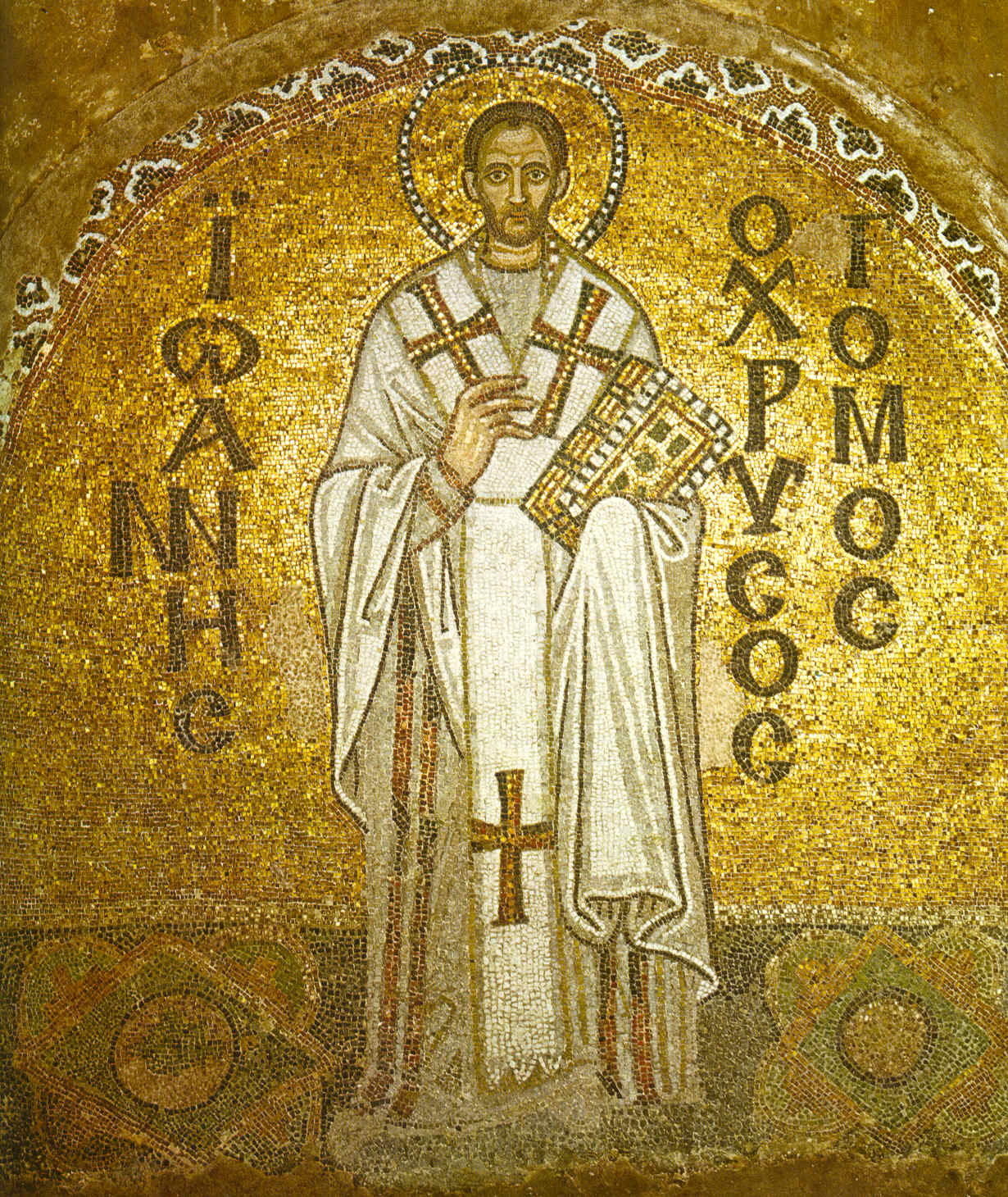
In his sermon on Romans 12:13, the great early Christian preacher St. John Chrysostom (347-407 A.D.) praised Abraham and Lot as examples of radical hospitality:
Thus did Lot, thus Abraham. For he spent the whole day upon it, waiting for this goodly prey, and when he saw it, leaped upon it, and ran to meet them, and worshipped upon the ground, and said, “My Lord, if now I have found favor in Thy sight, pass not away from Thy servant.” [Gen 18:3] Not as we do, if we happen to see a stranger or a poor man, knitting our brows, and not deigning even to speak to them. And if after thousands of entreaties we are softened, and bid the servant give them a trifle, we think we have quite done our duty. But he did not so, but assumed the fashion of a suppliant and a servant, though he did not know who he was going to take under his roof. . . . as did Abraham also, whom beside his largeness and ready mind it is just especially to admire, on this ground, that when he had no knowledge who they were that had come, yet he so acted. Do not thou then be curious either: since for Christ thou dost receive him. And if thou art always so scrupulous, many a time wilt thou pass by a man of esteem, and lose thy reward from him. . . . Do not then busy thyself with men’s lives and doings. For this is the very extreme of niggardliness, for one loaf to be exact about a man’s entire life. For if this person be a murderer, if a robber, or what not, does he therefore seem to thee not to deserve a loaf and a few pence? And yet thy Master causeth even the sun to rise upon him! And dost thou judge him unworthy of food even for a day? (Homilies on Romans 21).
The lesson of the Sodom story is not that God is moved to uncontrollable anger at the thought of men having sex with other men. God’s anger is poured out on the inhospitable: on those who respond to the stranger and the needy, not with compassion, but with contempt–even violence and abuse. That is why Sodom was destroyed, in this ancient story. God give us ears to hear, and hearts to repent of our own inhospitable acts.
AFTERWORD
Here are all the passages in the Bible that refer to Sodom (quoted from the NRSV), both those cited in the blog above and those that are not. I have grouped them by the type of reference, but feel free to ignore my grouping, and to look these passages up in context yourself, in your own Bible or online at Bible Gateway.
SODOM IN THE BIBLE
Neutral
Gen. 10:19 And the territory of the Canaanites extended from Sidon, in the direction of Gerar, as far as Gaza, and in the direction of Sodom, Gomorrah, Admah, and Zeboiim, as far as Lasha.
Gen. 13:12 Abram settled in the land of Canaan, while Lot settled among the cities of the Plain and moved his tent as far as Sodom.
Ezek. 16:46 Your elder sister is Samaria, who lived with her daughters to the north of you; and your younger sister, who lived to the south of you, is Sodom with her daughters.
Neutral/Positive
Gen. 14:2 these kings made war with King Bera of Sodom, King Birsha of Gomorrah, King Shinab of Admah, King Shemeber of Zeboiim, and the king of Bela (that is, Zoar).
Gen. 14:8 Then the king of Sodom, the king of Gomorrah, the king of Admah, the king of Zeboiim, and the king of Bela (that is, Zoar) went out, and they joined battle in the Valley of Siddim
Gen. 14:10 Now the Valley of Siddim was full of bitumen pits; and as the kings of Sodom and Gomorrah fled, some fell into them, and the rest fled to the hill country.
Gen. 14:11 So the enemy took all the goods of Sodom and Gomorrah, and all their provisions, and went their way;
Gen. 14:12 they also took Lot, the son of Abram’s brother, who lived in Sodom, and his goods, and departed.
Gen. 14:17 After his return from the defeat of Chedorlaomer and the kings who were with him, the king of Sodom went out to meet him at the Valley of Shaveh (that is, the King’s Valley).
Gen. 14:21 Then the king of Sodom said to Abram, “Give me the persons, but take the goods for yourself.”
Gen. 14:22 But Abram said to the king of Sodom, “I have sworn to the LORD, God Most High, maker of heaven and earth,
Gen. 18:26 And the LORD said, “If I find at Sodom fifty righteous in the city, I will forgive the whole place for their sake.”
Ezek. 16:53 I will restore their fortunes, the fortunes of Sodom and her daughters and the fortunes of Samaria and her daughters, and I will restore your own fortunes along with theirs,
Ezek. 16:55 As for your sisters, Sodom and her daughters shall return to their former state, Samaria and her daughters shall return to their former state, and you and your daughters shall return to your former state.
Story of destruction
Gen. 18:16 Then the men set out from there, and they looked toward Sodom; and Abraham went with them to set them on their way.
Gen. 18:22 So the men turned from there, and went toward Sodom, while Abraham remained standing before the LORD.
Gen. 19:1 The two angels came to Sodom in the evening, and Lot was sitting in the gateway of Sodom. When Lot saw them, he rose to meet them, and bowed down with his face to the ground.
Gen. 19:4 But before they lay down, the men of the city, the men of Sodom, both young and old, all the people to the last man, surrounded the house;
Gen. 19:24 Then the LORD rained on Sodom and Gomorrah sulfur and fire from the LORD out of heaven;
Gen. 19:28 and he looked down toward Sodom and Gomorrah and toward all the land of the Plain and saw the smoke of the land going up like the smoke of a furnace.
Metaphor for destruction
Deut. 29:23 all its soil burned out by sulfur and salt, nothing planted, nothing sprouting, unable to support any vegetation, like the destruction of Sodom and Gomorrah, Admah and Zeboiim, which the LORD destroyed in his fierce anger —
Deut. 32:32 Their vine comes from the vinestock of Sodom, from the vineyards of Gomorrah; their grapes are grapes of poison, their clusters are bitter;
Isa. 1:9 If the LORD of hosts had not left us a few survivors, we would have been like Sodom, and become like Gomorrah.
Isa. 1:10 Hear the word of the LORD, you rulers of Sodom! Listen to the teaching of our God, you people of Gomorrah!
Isa. 3:9 The look on their faces bears witness against them; they proclaim their sin like Sodom, they do not hide it. Woe to them! For they have brought evil on themselves.
Isa. 13:19 And Babylon, the glory of kingdoms, the splendor and pride of the Chaldeans, will be like Sodom and Gomorrah when God overthrew them.
Jer. 23:14 But in the prophets of Jerusalem I have seen a more shocking thing: they commit adultery and walk in lies; they strengthen the hands of evildoers, so that no one turns from wickedness; all of them have become like Sodom to me, and its inhabitants like Gomorrah.
Jer. 49:18 As when Sodom and Gomorrah and their neighbors were overthrown, says the LORD, no one shall live there, nor shall anyone settle in it.
Jer. 50:40 As when God overthrew Sodom and Gomorrah and their neighbors, says the LORD, so no one shall live there, nor shall anyone settle in her.
Lam. 4:6 For the chastisement of my people has been greater than the punishment of Sodom, which was overthrown in a moment, though no hand was laid on it.
Ezek. 16:56 Was not your sister Sodom a byword in your mouth in the day of your pride,
Amos 4:11 I overthrew some of you, as when God overthrew Sodom and Gomorrah, and you were like a brand snatched from the fire; yet you did not return to me, says the LORD.
Zeph. 2:9 Therefore, as I live, says the LORD of hosts, the God of Israel, Moab shall become like Sodom and the Ammonites like Gomorrah, a land possessed by nettles and salt pits, and a waste forever. The remnant of my people shall plunder them, and the survivors of my nation shall possess them.
Matt. 10:15 Truly I tell you, it will be more tolerable for the land of Sodom and Gomorrah on the day of judgment than for that town.
Matt. 11:23 And you, Capernaum, will you be exalted to heaven? No, you will be brought down to Hades. For if the deeds of power done in you had been done in Sodom, it would have remained until this day.
Matt. 11:24 But I tell you that on the day of judgment it will be more tolerable for the land of Sodom than for you.”
Luke 10:12 I tell you, on that day it will be more tolerable for Sodom than for that town.
Luke 17:29 but on the day that Lot left Sodom, it rained fire and sulfur from heaven and destroyed all of them
Rom. 9:29 And as Isaiah predicted, If the Lord of hosts had not left survivors to us, we would have fared like Sodom and been made like Gomorrah.”
2Pet. 2:6 and if by turning the cities of Sodom and Gomorrah to ashes he condemned them to extinction and made them an example of what is coming to the ungodly;
Rev. 11:8 and their dead bodies will lie in the street of the great city that is prophetically called Sodom and Egypt, where also their Lord was crucified.
Destroyed—no reason given
Gen. 13:10 Lot looked about him, and saw that the plain of the Jordan was well watered everywhere like the garden of the LORD, like the land of Egypt, in the direction of Zoar; this was before the LORD had destroyed Sodom and Gomorrah.
Destroyed for wickedness (implicit or explicit)
Gen. 13:13 Now the people of Sodom were wicked, great sinners against the LORD.
Gen. 18:20 Then the LORD said, “How great is the outcry against Sodom and Gomorrah and how very grave their sin!
Ezek. 16:48 As I live, says the Lord GOD, your sister Sodom and her daughters have not done as you and your daughters have done.
Ezek. 16:49 This was the guilt of your sister Sodom: she and her daughters had pride, excess of food, and prosperous ease, but did not aid the poor and needy.
Jude 7 Likewise, Sodom and Gomorrah and the surrounding cities, which, in the same manner as they, indulged in sexual immorality and pursued unnatural lust, serve as an example by undergoing a punishment of eternal fire.




 This past month saw a tremendous flurry of media attention to LGBTQ issues. In an interview with GQ, Mr. Phil Robertson, patriarch of the millionaire family of duck call manufacturers featured in the popular reality series “Duck Dynasty,” voiced his views on
This past month saw a tremendous flurry of media attention to LGBTQ issues. In an interview with GQ, Mr. Phil Robertson, patriarch of the millionaire family of duck call manufacturers featured in the popular reality series “Duck Dynasty,” voiced his views on  This week, we celebrate the life of Franklin McCain, who died at the age of 72. Mr. McCain was one of the “Greensboro Four” who in 1960 sat, day after day, at the whites-only lunch counter of a Greensboro, NC Woolworth’s, inviting ridicule, persecution, and arrest. Their act of protest gave rise to sit-ins across the South, and helped overturn the discriminatory Jim Crow laws that Mr. Robertson somehow does not recall.
This week, we celebrate the life of Franklin McCain, who died at the age of 72. Mr. McCain was one of the “Greensboro Four” who in 1960 sat, day after day, at the whites-only lunch counter of a Greensboro, NC Woolworth’s, inviting ridicule, persecution, and arrest. Their act of protest gave rise to sit-ins across the South, and helped overturn the discriminatory Jim Crow laws that Mr. Robertson somehow does not recall.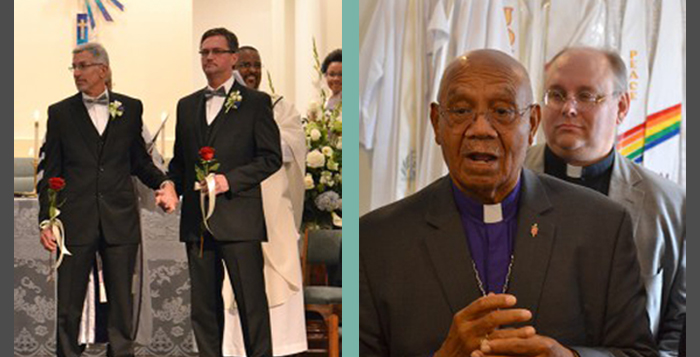 Retired
Retired 



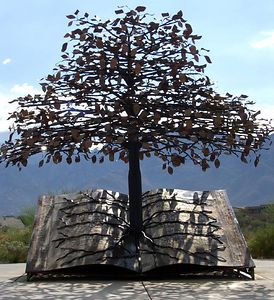

 Perhaps the best way to understand the expression “the Knowledge of Good and Evil” is as a
Perhaps the best way to understand the expression “the Knowledge of Good and Evil” is as a 









